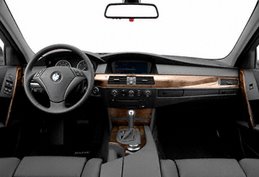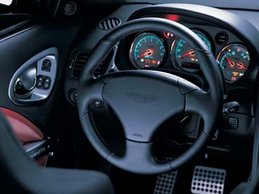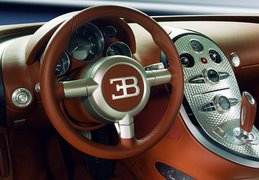 2006 Pontiac G6 GTP Convertible - It’s easy to make allowances for a little hyperbole. After all, how many winners has GM fielded over the past few seasons? Let’s not go there. But let’s not avoid a reality check, either. The G6 convertible represents exactly one real breakthrough: It’s the first hardtop convertible to break the $30,000 frontier — that would be breakthrough, as in “penetrate from above.” You might observe that the 1957 Ford Skyliner, with its retracting hardtop and a base price back then of less than $3000, would cost a little more than $20,000 in contemporary bucks.
2006 Pontiac G6 GTP Convertible - It’s easy to make allowances for a little hyperbole. After all, how many winners has GM fielded over the past few seasons? Let’s not go there. But let’s not avoid a reality check, either. The G6 convertible represents exactly one real breakthrough: It’s the first hardtop convertible to break the $30,000 frontier — that would be breakthrough, as in “penetrate from above.” You might observe that the 1957 Ford Skyliner, with its retracting hardtop and a base price back then of less than $3000, would cost a little more than $20,000 in contemporary bucks.The G6 shares the same basic structure, including the same 112.3-inch wheelbase, as its coupe and sedan stablemates. Not only is the wheelbase the same, almost all the exterior dimensions are the same, two doors or four, folding top or solid. The only difference between coupe and convertible is this droptop’s decklid height, which is 1.7 inches higher, at 42.9 inches. The G6 engineering team is quick to point out that this doesn’t really affect rear sightlines, and we have no reason to disagree.
Pontiac assigned the convertible development program to Karmann USA, headquartered in Plymouth, Michigan. Over the decades, the company (it originated in Germany) has created more than a few convertibles. For Pontiac’s folding hardtop, the Karmann people looked at designs involving two and three roof sections, settling on two, primarily to preserve the same roofline as the coupe’s.
Aside fro
 m the folding hardtop, the convertible’s essentials are pretty much the same as those of the other members of the family. The hardtop is available only in GT and GTP trim levels — no base version — which means one of two pushrod V-6 engines: a 3.5-liter (201 horsepower, 221 pound-feet of torque) for the GT and a 3.9-liter (227 horsepower, 235 pound-feet) for the GTP, our test subject. Both are mated to four-speed Hydra-Matic automatic transmissions, both of which include a manumatic function operated with the shift lever — there are no paddle shifters. However, in manumatic mode the G6 automatic will hold a chosen gear right up to the rev limiter.
m the folding hardtop, the convertible’s essentials are pretty much the same as those of the other members of the family. The hardtop is available only in GT and GTP trim levels — no base version — which means one of two pushrod V-6 engines: a 3.5-liter (201 horsepower, 221 pound-feet of torque) for the GT and a 3.9-liter (227 horsepower, 235 pound-feet) for the GTP, our test subject. Both are mated to four-speed Hydra-Matic automatic transmissions, both of which include a manumatic function operated with the shift lever — there are no paddle shifters. However, in manumatic mode the G6 automatic will hold a chosen gear right up to the rev limiter.The engineering troops say they sought to preserve what they perceive as the sporty character of the solid-roof G6 offerings, but we have a couple problems with that. For one, we have trouble perceiving the G6’s dynamics as sporty. That means any G6 (although an upcoming engine option could change our opinion). The G6 GTP sedan we tested in February [“Everyday Heroes”] posted decent objective test numbers but came up fifth of five in subjective scoring. Relax the suspension, soften the structure with a folding top, add 341 pounds, remove the six-speed manual-transmission option, and you wind up with a car that’s as exciting as Barry Manilow singing Gregorian chants in a silo.
Acceleration is another ho-hum. GM’s 3.9-liter V-6 has respectable torque, but limited by a four-speed automatic and additional mass, the convertible G6 GTP’s progress is a bit tame compared with the sedan’s: 0 to 60 in 7.4 seconds (compared with 6.2), the quarter in 15.7 at 89 mph (compared with 14.9 at 95). To be fair, those numbers are better than the results posted by the last Sebring convertible we tested [“Sunshine Missionaries,” May 2001] and are within a 10th of the sprints registered by a Toyota Camry Solara we clocked in September 2004.
Speaking of passengers, they’re well treated here, fore-and-aft. The front buckets — clad with perforated leather (optional) in our test car—are well shaped, nicely adjustable, and more than supportive enough for the modest level of sport driving this car is likely to inspire. And the rear seat accommodates two adult-size passengers, who can bask away back there without having their knees polished by the front seatbacks. There’s also a nice perch between the rear-seat headrests for a homecoming queen.

Speaking of price, the under-$30,000 hosannas apply to both trim levels. The basic GT, which isn’t quite as well equipped as the GTP, starts at $28,490. The GTP, which includes ABS, StabiliTrak, auto climate control, power driver’s seat, premium audio, steering adjustable for rake and reach, to skim the list, starts at $29,990.
Our test car had the $1265 Leather package (recommended), the $400 wind blocker (your call on that one), remote starting ($190), and front-seat side-impact airbags ($295). It was a $32,140 package — a bit north of that 30K frontier, but for the time being, it’s an attractive price for an attractive boulevard cruiser with four-season usefulness.













No comments:
Post a Comment